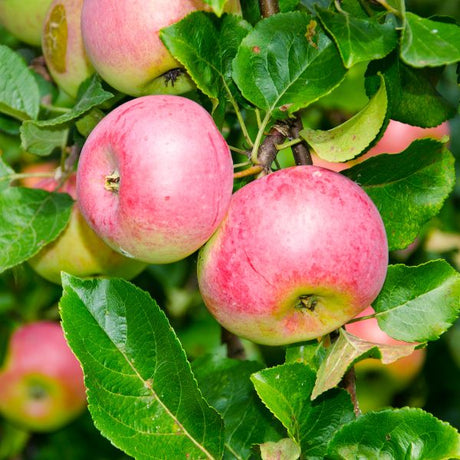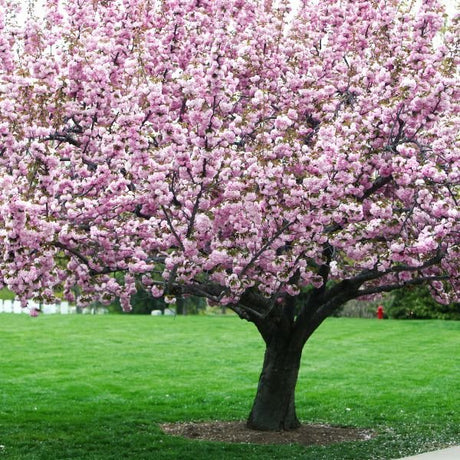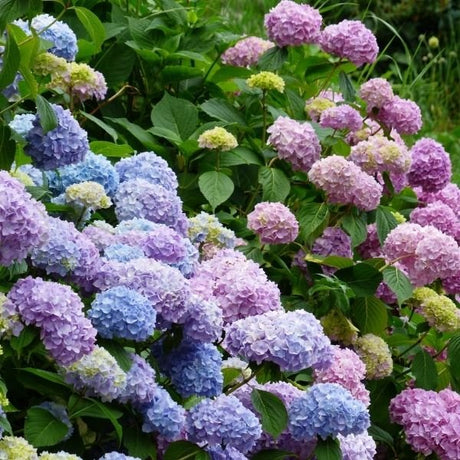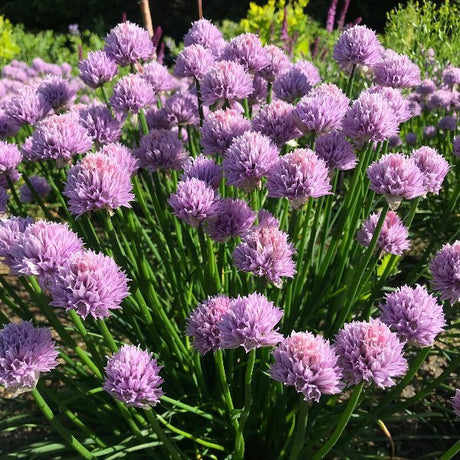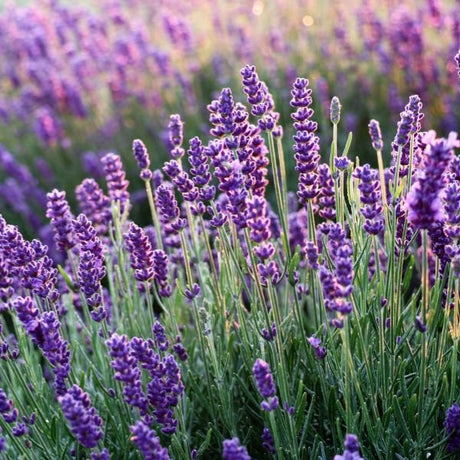American Chestnut
Castanea dentata
- Stay Protected with Plant Sentry ™
American Chestnut - #3 Container 2-3 Feet is backordered and will ship as soon as it is back in stock.
Plant Sentry™
Plant Sentry™

Plant Sentry™ Protected
Your order is protected by our compliance system that:
- Prevents restricted plants from shipping to your state
- Ensures plants meet your state's agricultural requirements
- Protects gardens from invasive pests and diseases
Delivery and Shipping
Delivery and Shipping
Delivery and Shipping
Fast, Safe Plant Delivery
Ships in 3-4 business days • Tracking provided • Weather protected
| Under $50 | $9.99 |
| $50 - $99.99 | $14.99 |
| $100 - $149.99 | $16.99 |
| $150+ | $24.99 |
✓ Zone-specific timing • ✓ Professional packaging • ✓ Health guarantee
Understanding Plant Options
Nature Hills offers plants in two main formats:
- Container Plants: Grown in pots with soil, sized by container volume and plant age
- Bare Root Plants: Dormant plants without soil, sized by height measurements
Container Plant Sizes
Container sizes indicate plant age and growing capacity rather than liquid volume equivalents. Our containers follow industry-standard nursery "trade gallon" specifications, which differ from standard liquid gallon measurements.
Young Plants (6 months to 18 months old)
| Container Size | Actual Volume | Metric Equivalent |
|---|---|---|
| 2" x 2" x 3" | 0.18 - 0.21 dry quarts | 0.20 - 0.23 dry liters |
| 4" Container | 0.31 - 0.87 dry quarts | 0.35 - 0.96 dry liters |
| 4.5" Container | 0.65 dry quarts | 0.72 dry liters |
| 6" Container | 1.4 dry quarts | 1.59 dry liters |
| 1 Quart | 1 dry quart | 1.1 dry liters |
| 5.5" Container | 1.89 dry quarts | 2.08 dry liters |
Established Plants (18 months to 2.5 years old)
| Container Size | Actual Volume | Metric Equivalent |
|---|---|---|
| 2 Quart | 2 dry quarts | 2.2 dry liters |
| #1 Container | 2.26 - 3.73 dry quarts | 2.49 - 4.11 dry liters |
| 5" x 5" x 12" | 3.5 - 4.3 dry quarts | 3.85 - 4.74 dry liters |
Mature Plants (2-4 years old)
| Container Size | Actual Volume | Metric Equivalent |
|---|---|---|
| #2 Container | 1.19 - 1.76 dry gallons | 5.24 - 7.75 dry liters |
| #3 Container | 2.15 - 2.76 dry gallons | 8.14 - 12.16 dry liters |
Large Plants (3-5 years old)
| Container Size | Actual Volume | Metric Equivalent |
|---|---|---|
| #5 Container | 2.92 - 4.62 dry gallons | 12.86 - 20.35 dry liters |
| #6 Container | 5.25 - 6.01 dry gallons | 23.12 - 26.42 dry liters |
| #7 Container | 5.98 - 6.53 dry gallons | 26.34 - 28.76 dry liters |
Bare Root Plants
Bare root plants are sold by height from the root system to the top of the plant. Plants may exceed minimum height requirements.
Common Sizes:
- Trees: 1 foot, 2 feet, 3 feet, 4 feet, 5 feet, 6 feet
- Shrubs & Perennials: 1 foot, 18 inches, 2 feet
Important Notes
Container Volume Specifications
- Trade Gallon Standard: Our containers follow industry-standard "trade gallon" specifications established by the American National Standards Institute (ANSI Z60.1) for nursery stock
- Volume Variations: Actual soil volume may vary due to plant root systems and growing medium settlement
- Age Indicators: Container size primarily indicates plant age and maturity rather than liquid volume equivalents
Growing Conditions
- Plant size can vary based on variety and growing conditions
- Container size helps indicate plant maturity and establishment level
- Larger containers generally mean more established root systems and faster landscape establishment
Seasonal Availability
- Bare root plants are available seasonally when dormant
- Container plants are available throughout the growing season
- Specific varieties may have limited availability in certain sizes
Questions?
For questions about specific plant sizes or availability, please contact our plant experts who can help you choose the right size for your landscape needs.
Plant Highlights
American Chestnut highlights at a glance!
-
Brand
-
Botanical Name
-
Growing Zones5, 6, 7, 8
-
Mature Height
-
Mature Spread
-
Sun ExposureFull Sun
-
Moisture
-
Soil
-
Growth RateFast
-
Fall Color
-
Pollinator Required
-
Pruning Time
-
Bloom PeriodSummer
-
Harvest Time
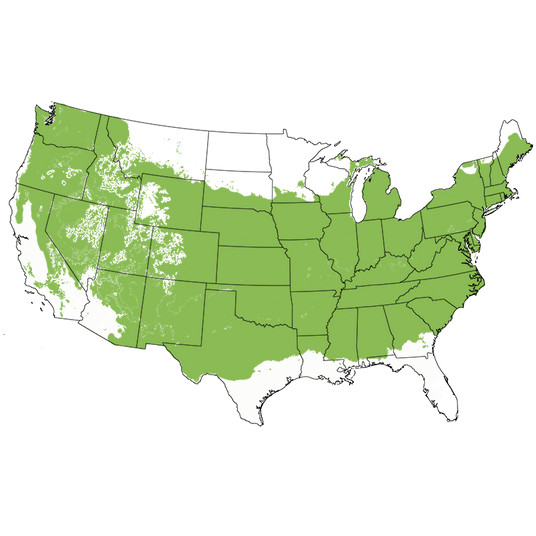
Growing Zones 5 - 8
Grow a legendary icon and native legacy when you order the American Chestnut Tree (Castanea dentata)! Once the dominant tree throughout Eastern forests, the Chestnut almost went extinct in 1904 due to an imported fungus. Planting one in your landscape brings this majestic tree back to today's boulevards and gardens!
Summer lights up your tree with long, fuzzy catkins in unique clusters of showy white flowers, standing tall at the ends of every branch! The display attracts a wide range of pollinators and Host Plant to their larvae! Fall brings unique green spikey seed pods, each with glossy, easy-to-peel, chestnut brown nuts.
The nuts of the American Chestnut are edible, crunchy, and sweet! Roast these nuts for a tasty seasonal treat in the late-season months of September and October, and sometimes into November. Freeze the nuts for a long time, freshly roasted nuts should be eaten soon and can be stored in the fridge for a few weeks.
Featuring leaves with prominent veins, a smooth surface, and a leathery texture so they will not get damaged in storms or wind. The coarsely-toothed margins of the foliage add incredible interest!
Hardy throughout USDA growing zones 5 to 8, these mighty deciduous trees grow 60-85 feet in height and 50-75 feet in width. This broad range in sizes is due to the native variance, growing zone, and climate conditions.
Planting and Application:
The American Chestnut is a great street tree and shade tree! Use a single specimen in your landscape as a lawn tree, a focal point, and a majestic wildlife sanctuary! You'll enjoy the shade these statuesque native trees provide while creating stunning Bird-Friendly backdrops and borders.
These legacy trees are long-lived and ideal memorial plantings! Mark a birthday, an anniversary or a wedding tree planting ceremony, or memorialize a loved one who has passed with a majestic tree to remember them by.
You'll love the benefits your own Nut tree orchard can provide you and your wildlife! Cooling shade lowers AC bills and protects your lawn, garden, and seating areas from the harshest of the summer sun! Stop lawn furniture and siding from fading and protect your home from prevailing winds with these sturdy trees situated in the right spot!
The American Chestnut is not entirely self-pollinating and does best with a second tree to produce a crop. Even if a neighbor has one of these trees, you will get a great crop thanks to the bees and wind pollination for successful cross-pollination. Not only does creating groves of Chestnut trees improve pollination, but you'll create a wildlife hotspot!
- Clusters of White Fuzzy Blooms for Pollinators
- Caterpillar Host Plant for 130 Species of Moth & Butterfly Larvae
- Impressive Flowering and Ornamental Foliage
- Native, Early Producer of Easy-Peel Nuts
- Great Shade, Edible Nut Crops, Wildlife Trees & Lawn Specimens
#ProPlantTips for Care:
American Chestnut Trees need full sun to grow their strongest and prefer rich well-drained soils. These hardy natives are adaptable to most soil types. New trees do best with a regular schedule of water and a 3-4 inch deep layer of mulch around the entire root system. Plant new trees with the life-long symbiotic relationship of Nature Hills Root Booster and regular fertilizer. Prune your tree to correct your tree's shape in the late winter.
- Full Sun
- Well-Drained Soil & Moderate Moisture Needs
- Mulch New Trees Well
- Adaptable Hardy Natives
- Prune in Late Winter
Beautiful native American Chestnut Trees are making the return to the landscape with their adaptability and hardiness! Order yours today at Nature Hills Nursery and get growing a legacy for you and future generations!





